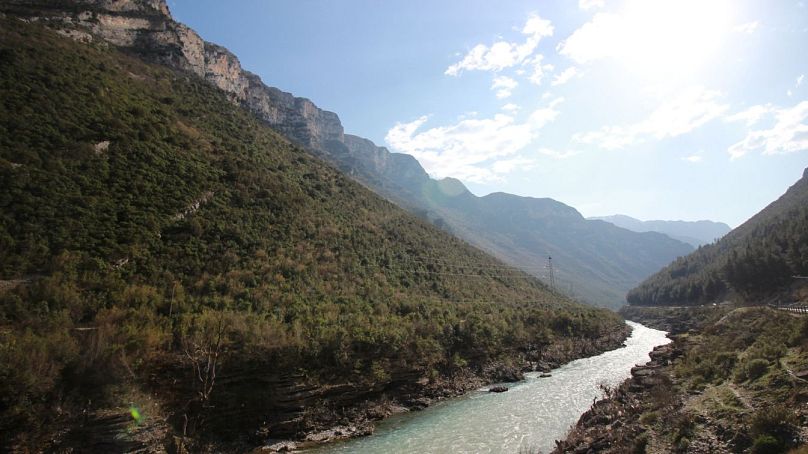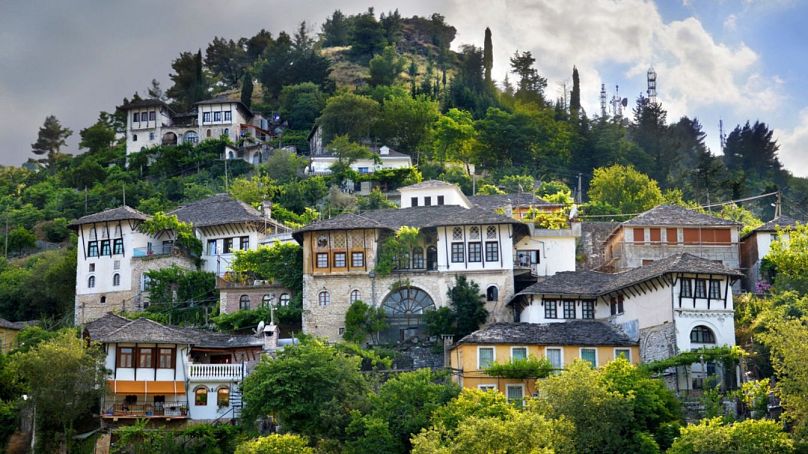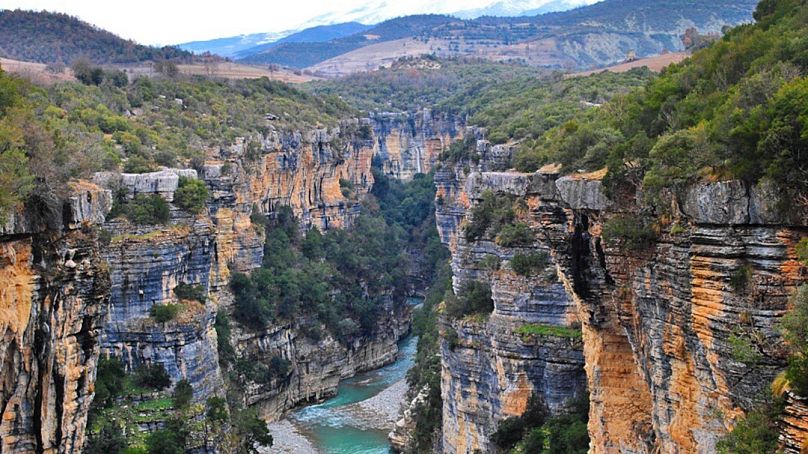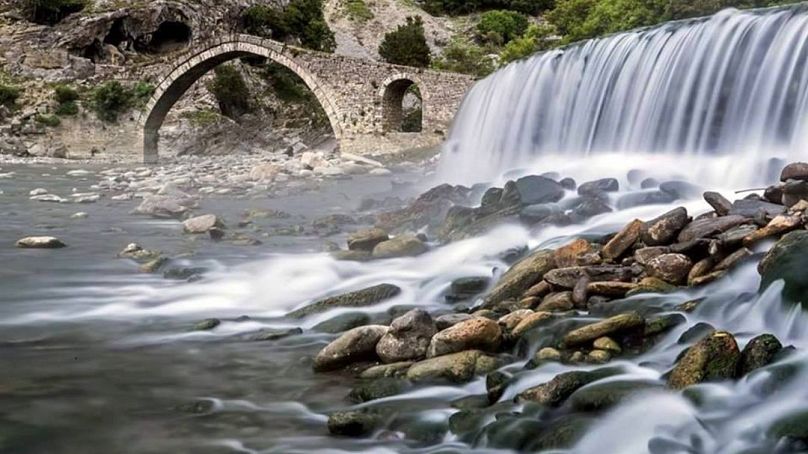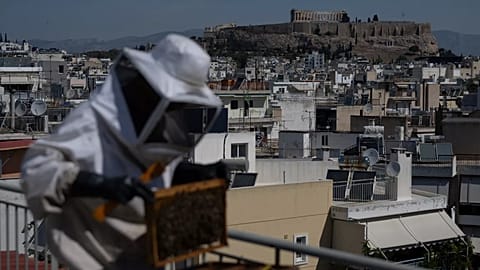White water rafting, delicious food and thermal baths await you in Eastern Europe’s newest wild river national park.
Vjosa River National Park is something of a miracle. After years of campaigning by clothing brand Patagonia, the IUCN and none other than actor Leonardo Dicaprio, this 6,500 square-kilometre basin of tributaries and wild waterways was given the protection it deserves, making it Europe’s first wild river park.
It may be the first park, but it is Europe’s last wild river, home to 1,110 species of animals and plants, of which two plant species and 13 animals are in danger of disappearing globally. Hence why official protection is so important.
The Vjosa begins in Greece as the Aoös, before crossing to Albania, snaking through the Balkan mountains, and finally reaching the Adriatic Sea.
Along the way, it passes through green fields and alongside mountain slopes, creating impressive canyons, sand islands and wonderful twists and turns.
The river’s beauty and significance have earned it the moniker the ‘Blue Heart of Europe’
Sold? Read on for the best places to soak in the majesty of this European wonder.
Where is the best place to explore Vjosa River National Park?
We have picked the most picturesque towns where you can experience this mighty river - Përmet, Tepelenë and Gjirokastër. If you’re coming from the Albanian capital Tirana, it’s a 2.5-3.5 hour drive to these cities.
They’re also accessible by bus.
If you can't choose where to go, don't worry. These towns are close to each other so could easily be done in the same trip.
As Albania is still an under-the-radar destination, you’ll easily find accommodation in all of our recommended places.
A locally-run guesthouse is the best way to get to know Albanians and their way of life. But there are also larger hotels if you want a more polished experience.
Përmet: Horseback rides and local food
Vjosa is a natural habitat where you can feel the true power of a wild river. Rafting is the best way to get up close and personal with its power and Përmet has plenty of companies who’ll arrange tours for you.
There are also tour operators who arrange horseback rides. With the help of a four-legged friend, you’ll visit forests and local villages - these are the best place to sample really traditional Albanian food.
If you’re looking for a slower-paced way to get around Përmet, a wander around this ‘city of flowers’ will be perfect. Locals like to say that “except for the sea, you can find everything else in this city”. Albanian cuisine is plentiful here too, made with organic products grown by local farmers.
While in Përmet, don’t miss out on the Ottoman Kadiut Bridge, 14km away. The turquoise waters of the Langarica River flow under the bridge, making for a stunning sight. Built in the Middle Ages, it has been used for centuries to cross the river, since the days when the Ottoman Empire controlled Albania.
‘Kadiut’ means Judge’s Bridge (Ura e Katiut). The name comes from a legend that a judge (‘katiut’ in Turkish) was thrown from the top of the bridge.
If you’ve got a head for adventure, Langarica Canyon and the caves around Petranik are ideal for diving and canyoning.
Or for something more restorative, make the most of the natural spas in this area.
During the communist era, they were frequented by Albanians to cure their various health problems. You can visit the ruins of a camp built during the Ottoman Empire. You can see the accommodation where patients stayed, rooms for relaxing and even bathtubs from that time.
To this day, the thermal waters are known for their healing powers.
Tepelena: Thermal baths and castles
Tepelena is sandwiched between rugged mountain ranges and overlooks the confluence of the Vjosa and Drinos rivers. It lies at the foot of a hill, creating a magnificent landscape around it.
Tepelena was made famous by aristocrat Ali Pasha Tepelena, who started off his career as a bandit robbing trade caravans but ended up as a ruthless governor for the Ottomans, ruling over a vast area of land between Tepelena, Gjirokastra and Ioaninna.
His former castle is worth visiting for another view of Vjosa, where it joins with the Drinos River.
He left behind plenty of charming mountain villages, waterfalls, castle ruins and caves so there’s plenty to fill a few days here.
Where is the best place to see animals in Vjosa River National Park?
You’re spoilt for choice when it comes to places to spot rare animals. But we’d recommend the Narta Lagoon on Albania’s west coast.
It is one of the largest and most ecologically rich lagoons in the country. Designated as a Managed Nature Reserve, you’re guaranteed to see unspoilt landscapes here.
The most important wildlife inhabiting this lagoon include the flamingo, the Dalmatian pelican, the golden jackal and the short-beaked common dolphin.
















